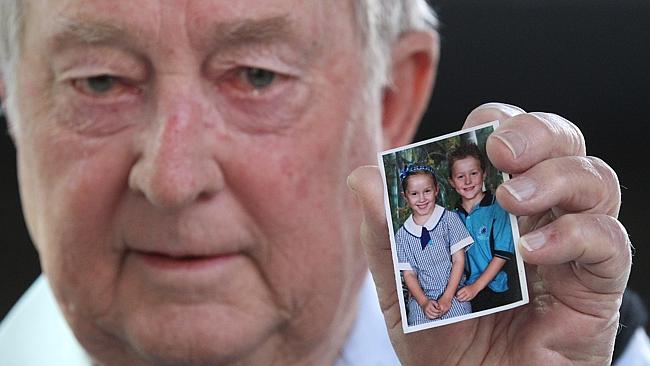
While Lilli’s twin brother Bailey was not born with the hereditary condition – her father Brett Sweet and grandfather William Sweet were. Source: News Corp Australia

Lilli Sweet with twin brother Bailey. Source: Supplied
THE grandfather of a girl, six, who died in hospital two years ago from complications from a severe bacterial infection, says he wants to know why she was not given treatment she needed.
William Sweet hopes a four-day inquest in November will provide answers about the treatment his granddaughter Lilli Sweet of Caloundra received before her death.
“I hope to know that treatment for other people is going to be better than the treatment Lilli got,” Mr Sweet said outside Brisbane Coroner’s Court.
Mr Sweet said Lilli was a “very vibrant girl, a very smart girl”, who loved the colour pink.
He said it had been a tough time for the family since Lilli’s death on August 27, 2013.
Lilli was born with a hereditary condition that caused anaemia and an enlarged spleen and she had an operation to remove her spleen in 2011, when she was just four and a half.
Counsel assisting the coroner, Megan Jarvis, told the court the loss of her spleen left Lilli with a lifelong increased risk of severe and life-threatening infections.
While her twin brother Bailey was not born with the hereditary condition, other family members, including her father Brett Sweet and grandfather William Sweet were.
Mr Sweet senior said outside court both he and his son, 38, had had their spleens removed without problems.
“I’ve had the same disease and here I am at 75 years of age and fit and well as anybody could be,” he said.
The court was told the removal of her spleen left Lilli unable to fight infections herself and put her at risk of overwhelming post-splenectomy infection, or OPSI.

Lilli began suffering nausea, vomiting, headaches and neck pain and was referred by a GP to Nambour Hospital emergency. Source: Supplied
The risk in children was highest within the first few years following a splenectomy, but it
but could be mitigated with treatment, Ms Jarvis said.
A year and 10 months after her spleen was removed Lilli began suffering nausea, vomiting, headaches and neck pain and was referred by a GP to Nambour Hospital emergency.
Ms Jarvis said she was given treatment for a viral infection.
“Unfortunately Lilli was in fact suffering from a bacterial infection,” Ms Jarvis said.
Antibiotics to treat the infection were not administered until the following morning, when Lilli had deteriorated and was showing other symptoms, including a sign for meningitis.
By that time Lilli had severe sepsis and doctors began treating her for suspected bacterial meningitis.

The inquest will look at the adequacy of health care given to Lilli Sweet at Nambour Hospital. Picture: Jamie Hanson Source: News Corp Australia
Lilli was transferred to Royal Children’s Hospital, in Brisbane, but she was unresponsive on arrival, the court heard.
Ms Jarvis said tests the next day revealed Lilli had suffered extensive brain injury, supportive care was withdrawn and Lilli died soon afterwards in the arms of her mother Joanne Sweet.
The cause of her death was brain stem herniation, due to or as a consequence of pneumococcal meningitis, with the hereditary condition and the splenectomy contributory conditions.
The inquest, to be held from November 2 to 5 at Maroochydore, will examine the circumstances leading up to Lilli’s death and her care after the splenectomy.
It also will look at the adequacy of health care given to her at Nambour Hospital emergency from August 25, 2014.
